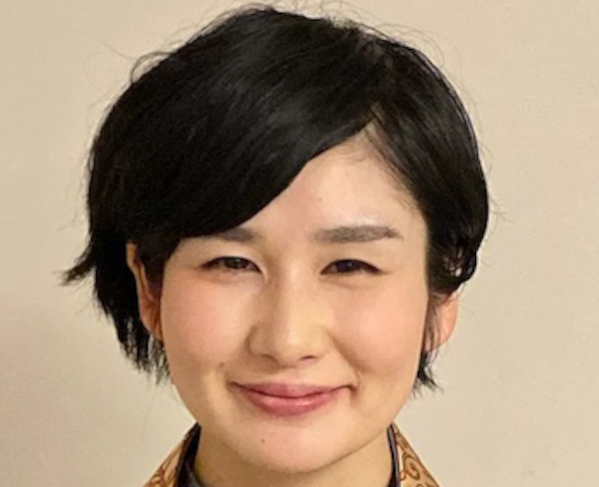Have you all seen the cherry blossoms since entering August?
This is a question that was posed by a Sensei who spoke at a morning service of Tsukiji Hongwanji the other day. My own answer is no. I have never cared about cherry blossoms except in spring because I thought the season for cherry blossoms was spring.
I wondered why he asked such a strange question.
He told us about his own experience.
One summer day, when the Sensei was walking outside his temple, he saw an old man looking at a cherry blossom tree with his arm behind his back. That man used to be the principal of the elementary school his daughter attended.
Of course, the cherry blossoms were not in bloom at that time, and the tree was covered with lush green leaves. Suddenly wondering what this man was looking at, Sensei asked the man what he was looking at, and he replied as a matter of course, “I am looking at the cherry blossoms.” Then, when asked “which part” of the cherry blossoms he was looking at this time. He replied again, “I’m just looking at the cherry blossoms.”
The man went on to tell the Sensei, “Cherry blossoms are getting ready for that summer season, when it gets hotter this time of year. The leaves they put on in this way will all fall off later. After that, they start preparing for winter. Cherry trees live hard all year round. When do YOU see cherry blossoms?”
Sensei replied, “I see them in spring when the beautiful flowers are in full bloom.”
“That’s nice. But you know, cherry blossoms are cherry blossoms all year round. It is always a great time to see them,” the man said to the Sensei.
I was so moved by hearing the conversation with the Sensei and the man. I went out and tried to look at the cherry tree in front of our Betsuin. Then I noticed how they are living their lives to the fullest even in the heat of the summer with their lush young leaves. It was a great chance encounter that reminded me that each of us and any other lives too, are living each moment to the fullest.
Do you know when the cherry blossoms we see begin to bud? I had never thought about it, but I was told that the buds, though small and tough, appear during the cold months of January through February.
I had thought that there are times when cherry blossoms are at their best and times when they are not at their best. In Buddhism, this way of looking at things is called “discrimination,” where we believe that there are times when things are worth seeing and times when they are not worth seeing. It is also called “wrong view” because it is a way of looking at things that is far from the way they really are. In this world, we do look at things or say things with discrimination. But in Buddhism, this discrimination is not used in a positive sense. In its positive sense, it is “non-discriminatory.” Buddhism teaches the importance of a way of looking at things that goes beyond such a way of looking at things like is it meaningful or meaningless, valuable or valueless, accepted by people or not accepted? It is not only that this view is taken of cherry blossoms. This way of looking at things with our prejudgment can apply to other people’s lives and also to oneself. These secluded views force us to question oneself about one’s existence or quality such as “ Am I worthy of being here now? Am I worthy of living?” When that way of looking at things comes toward me, I hurt myself. The Buddha is the one who has the gaze of non-discrimination, which is the great wisdom to see the things as they are. In Buddhism, we try to live our lives while leaving oneself to this wisdom of the Buddha. It is a teaching to allow oneself to become aware that we live our lives within that gaze. It is not only toward cherry blossoms. The Buddha’s non-discriminatory gaze sees all things as living in the moment, which is irreplaceable. If we can all listen to the fact that we are alive within that gaze, a warm heart will spread in each of our minds, and it will guide us to accept each other as we are.
皆さんは8月に入ってから桜はご覧になったでしょうか?
これは先日法話を聞いていた時にお話しした先生がおっしゃった質問です。私自身の答えはNoです。桜の旬は春だからこれまで春以外は気にしたことがありませんでした。お盆も終わりこんなに篤くなってきているのに今桜を見る人なんていないのに変な質問だと思うかもしれません。
わたしもなぜ彼はそんなことを聞くのだろうと思いました。
彼はご自身の体験を話してくれました。
ある夏の日、90そのお坊さんがお寺の外を歩いていると、一人の男性が後ろに腕を向見ながら桜の木を眺めているのを見つけたそうです。その方は彼の娘の通っていた小学校の校長先生だったそうです。
もちろんその時も、桜の花は咲いておらず、青々とした葉っぱが茂っていました。ふと不思議に思って彼はその男性に何を見ているかと尋ねると、「桜をみているんです」と当たり前のように返ってきました。すると、今度は桜の何を見ているかというと「嫌桜を見ています」とまた答えたそうです。
そして続けて男性はこんな風に彼に教えてくれました。
「桜は今の時期は暑くなってくる時期に、その夏の準備をしているんだ。こうして付けた葉っぱも後には全部散らしていく。そのあとは冬の準備に入っていくんですよ。桜は春も夏も秋も冬も一生懸命生きているんですよ。あなたは桜をいつみますか?」
すると、彼は「私は美しい花を満開に咲かせる春にみます」というと、彼は「いいですね。でも、桜は一年中桜です。桜は一年中見頃ですよ」と教えてくださったのだそうです。
私たちが見る桜の花はいつ頃蕾を付けるか知っていますか?私は考えたことがありませんでしたが、一月から2月の寒い時期に、小さくてかたいけれど蕾を付けるのだそうです。
私は桜には見ごろの時期と見ごろではない時期があるのだと思っていました。見るに値する時と、見るに値しない時期があると思っている、こういった物の見方を仏教では「分別」と言います。物事のあるがままの姿とかけ離れた見方ということから、邪見とも言います。世間は分別を持って物を見たり、ものを言わないと、叱られていく。でも仏教ではこの分別は積極的な意味では使われません。積極的な意味では「無分別」です。意味があるのか意味がないのか、価値があるのか価値が無いのか,見ごろか見ごろではないか?そんな物の見方を超えた物の見方を大切に説いていくのが仏教です。桜に対してこの見方が取られるのではありません。その物の見方は他の者や人、また私自身にも向かってきます。私は見ごろか?私は今ここにいていいのか?私に生きている価値はあるのか?その物の見方が私に向かってきたとき私が私を傷つけていく。仏様は無分別のまなざしをも持った方です。仏教ではこの仏様の無分別のまなざしを大切にしながら生きていこうとする。そしてそのまなざしを意識しながら生きていこうとする教えです。桜だけではありません。仏様の無分別は、全てをすべからくかけがえのないその一瞬を生きているものとご覧くださる。そのまなざしの中で生きているということをみんなで聞きていくことができればそれぞれの心に温かい心が広がっていくことでしょう。
夏の桜を見てみました。青々とした若葉を付けて、暑い中でも精一杯その命を生きている姿に気づかせていただきました。私たちもそれぞれがそれぞれの一瞬一瞬を藤得生かさせていただいているお互いであることを思い出させていただいたご縁でした。




